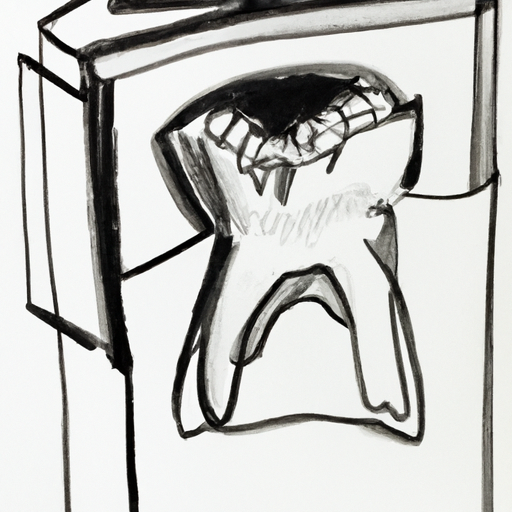Dental radiology is a crucial aspect of modern dentistry that plays a pivotal role in the diagnosis, treatment, and prevention of various oral health conditions. By utilizing cutting-edge technology and advanced imaging techniques, dental professionals are able to gain invaluable insights into the inner workings of the mouth, teeth, and surrounding structures. In this comprehensive guide, we will explore the world of dental radiology, delving into its importance, symptoms, causes, and effective treatment options. Whether you are a dental professional seeking to enhance your knowledge or an individual looking to better understand the role of dental radiology in maintaining optimal oral health, this article aims to provide you with a comprehensive overview of this powerful tool.
1. "Understanding Dental Radiology: A Comprehensive Guide to Diagnosis and Treatment"
Dental radiology, also known as dental imaging or dental radiography, is a crucial aspect of modern dentistry. It involves the use of various imaging techniques to capture detailed images of the teeth, jawbones, and other oral structures. These images aid in the diagnosis, treatment, and prevention of dental conditions and diseases. In this comprehensive guide, we will explore the significance of dental radiology, its various techniques, and how it helps dentists in providing accurate diagnosis and effective treatment to their patients.
One of the primary purposes of dental radiology is to diagnose dental problems that are not visible to the naked eye. Dentists use radiographs or X-rays to detect dental caries (tooth decay), periodontal diseases (gum diseases), infections, cysts, tumors, and abnormalities in tooth development. By examining these images, dentists can identify the severity of the condition, determine the appropriate treatment plan, and monitor the progress of ongoing treatments.
There are different types of dental radiographs that can be taken depending on the specific dental condition being evaluated. The most common types include periapical X-rays, bitewings, panoramic radiographs, and cone-beam computed tomography (CBCT). Each technique provides unique information about the teeth and supporting structures, enabling dentists to make accurate diagnoses and create personalized treatment plans for their patients.
Dental radiology also plays a crucial role in treatment planning. By thoroughly analyzing the radiographs, dentists can identify the best course of action to address the dental issue at hand. For example, if a patient has impacted wisdom teeth, an X-ray can help determine the position and orientation of these
2. "Unveiling the Secrets of Dental Radiology: Symptoms, Causes, and Effective Treatment Options"
Dental radiology, also known as dental imaging, plays a crucial role in the diagnosis and treatment of various dental conditions. By utilizing X-rays, dentists are able to capture detailed images of the teeth, jaw, and surrounding structures, enabling them to detect potential problems that may not be visible to the naked eye. In this section, we will delve into the symptoms, causes, and effective treatment options that dental radiology can unveil.
One of the primary benefits of dental radiology is its ability to identify tooth decay. Often, decay begins in the outer layer of the tooth, gradually progressing deeper into the inner structures. Without proper diagnosis, this decay can go unnoticed, leading to more severe complications. Dental radiographs can expose the early signs of tooth decay, such as dark spots or cavities, allowing dentists to intervene before the damage becomes irreparable.
Furthermore, dental radiology can provide valuable insights into the health of the jawbone and surrounding oral tissues. In cases of gum disease, initial symptoms may be subtle, and patients may not experience any discomfort. However, radiographic images can reveal bone loss and changes in the position of teeth, indicating the presence of gum disease. Armed with this information, dentists can develop appropriate treatment plans to halt the progression of the disease and prevent further damage.
Another condition that dental radiology can diagnose is impacted teeth. When a tooth fails to fully emerge from the gums, it is considered impacted. This can occur with wisdom teeth or other permanent teeth, causing pain, swelling, and an increased risk of infection. By examining X-rays, dentists can determine the exact position of the impacted tooth and devise a
3. "Dental Radiology: A Powerful Tool for Accurate Diagnosis and Optimal Oral Health"
Dental radiology, also known as dental imaging, has revolutionized the field of dentistry by providing a powerful tool for accurate diagnosis and optimal oral health. With the use of advanced imaging techniques, dentists can now detect and treat dental problems at their earliest stages, ensuring effective and timely treatment.
One of the key benefits of dental radiology is its ability to aid in the diagnosis of various dental conditions. Through radiographs, dentists can visualize the internal structures of the teeth, gums, and jawbone that are not visible to the naked eye. This allows them to identify issues such as tooth decay, dental abscesses, impacted teeth, cysts, tumors, and bone loss. By detecting these conditions early on, dentists can intervene promptly and prevent further damage or complications.
Moreover, dental radiology plays a crucial role in treatment planning. With the help of radiographs, dentists can accurately determine the extent of a dental problem and design a suitable treatment plan accordingly. For example, in cases of tooth decay, radiographs can reveal the depth of the cavity and help dentists decide whether a simple filling or a more extensive treatment, such as a root canal or extraction, is required. This ensures that patients receive the most appropriate and effective treatment, tailored to their specific needs.
Symptoms can often be misleading, making it difficult for dentists to determine the exact cause of a dental issue. However, dental radiology can provide valuable insights into the underlying causes. By analyzing radiographs, dentists can identify the root causes of dental problems, such as malocclusion, impacted teeth, or abnormalities in the jawbone. This knowledge allows dent

